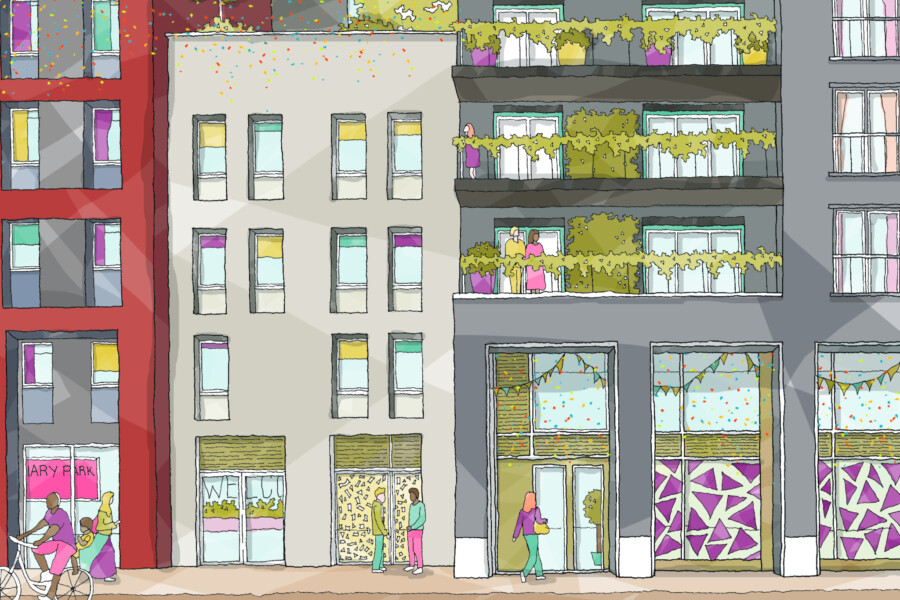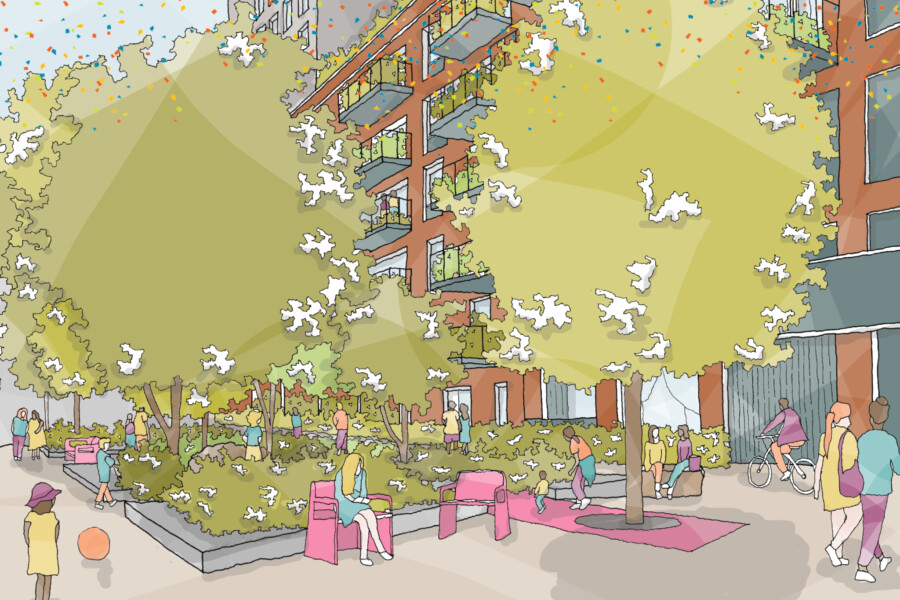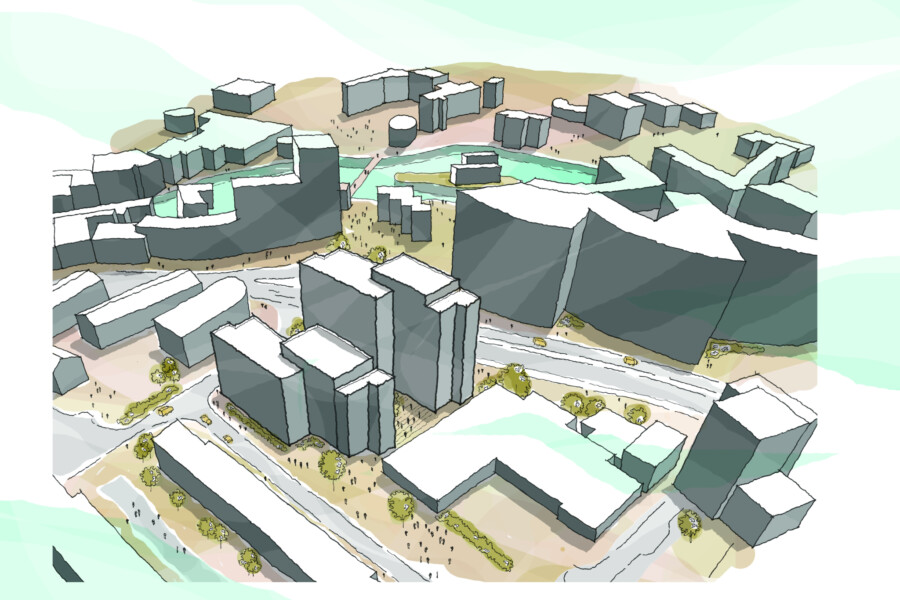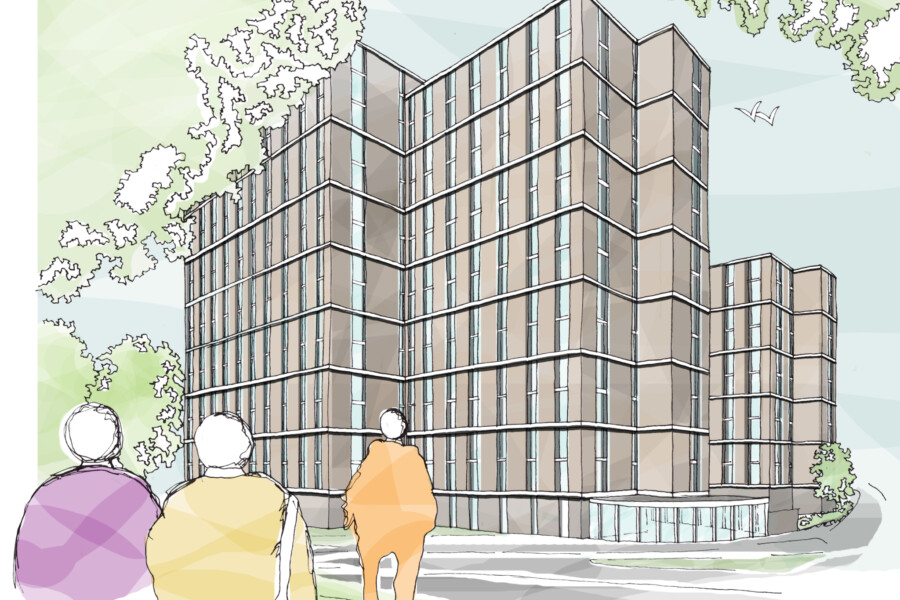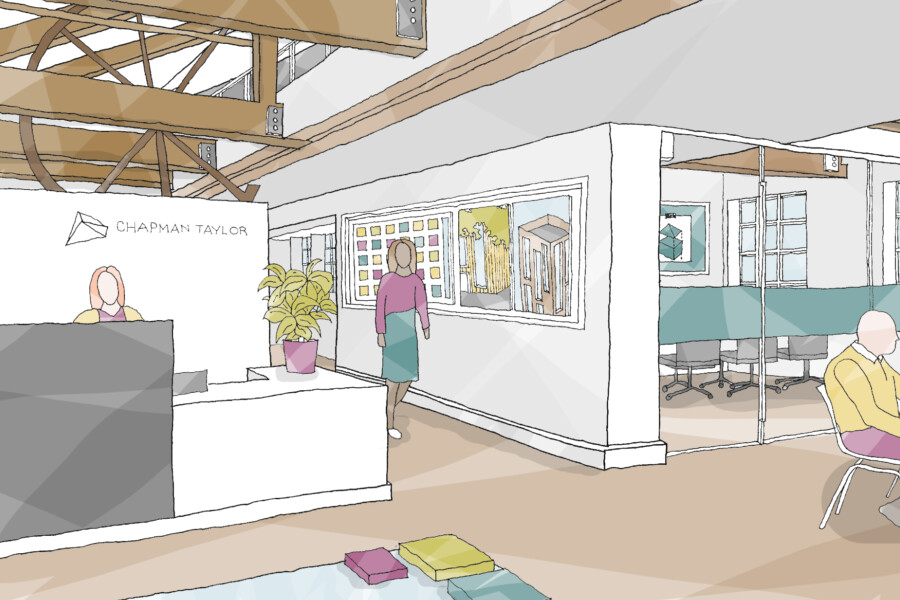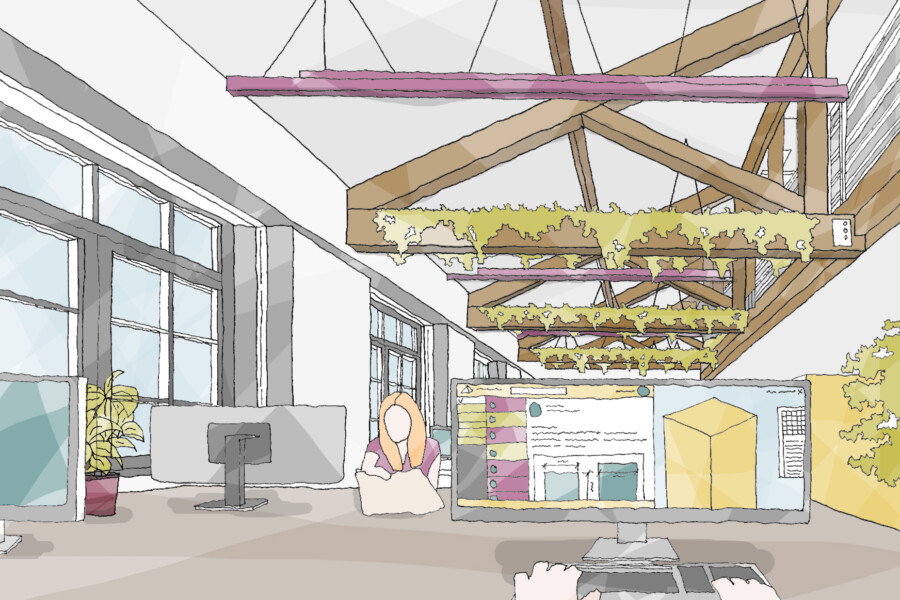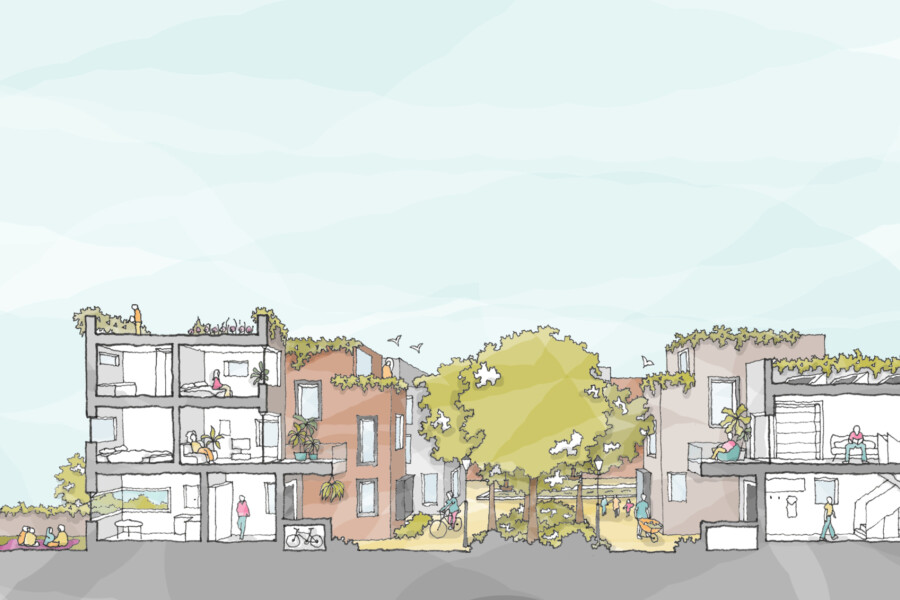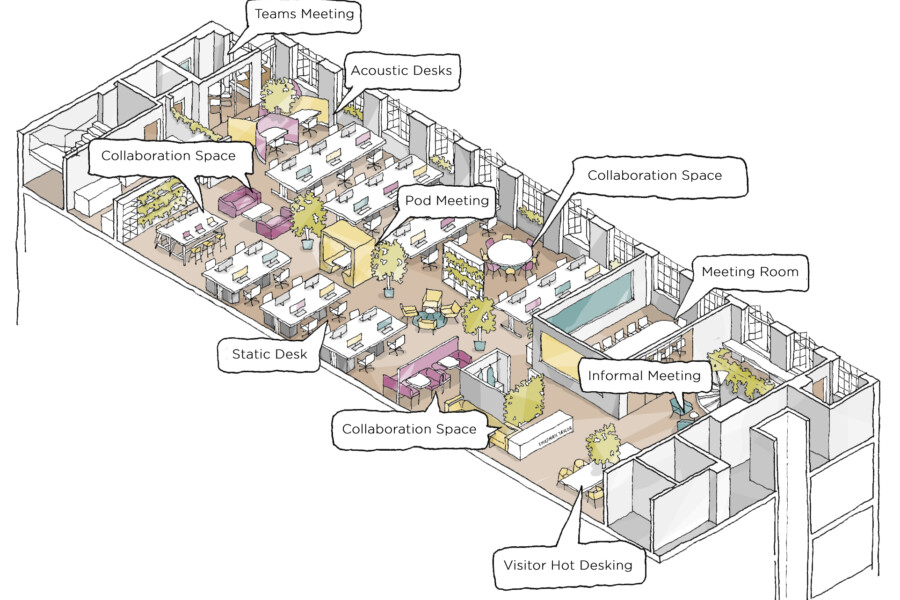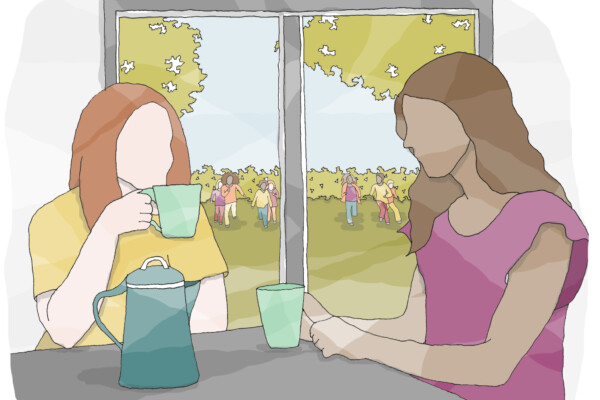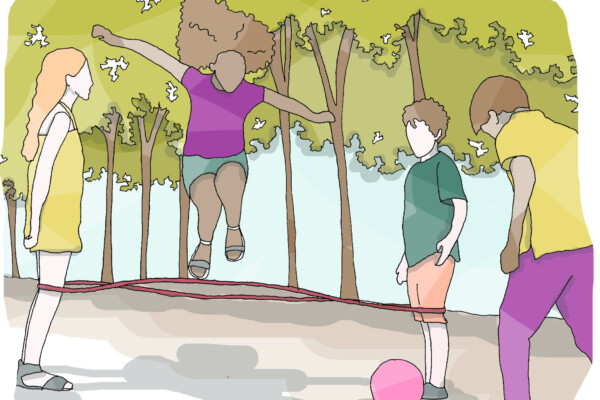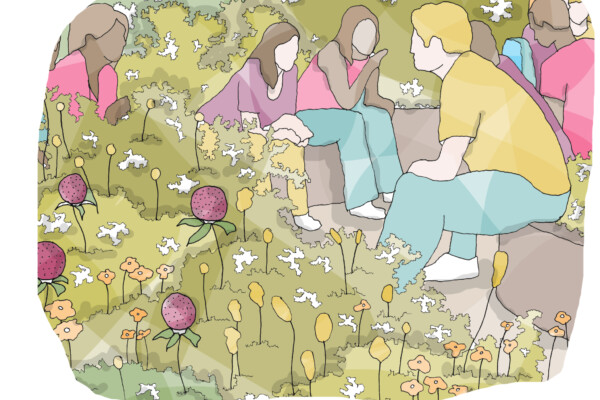From Sketch to Reality: Architectural Assistant Hannah Gaughan on using sketching to promote wellbeing
Architectural Assistant Hannah Gaughan joined Chapman Taylor’s Manchester studio in 2016 to work with the Feasibility team while completing her university studies. Hannah works mostly on the concept and design development phases of a wide range of projects, using her hand-drawing skills to show how a development can be experienced by its users. Hannah tells us here about her approach to sketching and her focus on the importance of visualising the wellbeing components of a design from early in the design process.
What kind of projects do you work on?
The projects I am asked to work on vary widely in scale and type. The first project for which I was asked to produce early sketches was a feasibility study to illustrate the potential regeneration of Runcorn Shopping City. I was tasked with sketching from a health and wellbeing angle, reflecting my deep interest in those topics – my master’s thesis was on the subject of designing for good health and wellbeing and I have applied many of the ideas from my research for that thesis in my designs.
Our approach on that project was to create almost cartoon-like images rather than dwelling on hard lines and mathematical exactitude – the client responded very well to that approach and was excited by the ideas we sketched.
Since then, I have worked on many projects with a similar focus, again developing sketches with an eye to conveying our ideas about how people will interact with the spaces. For example, at a residential development we are working on in North London, my brief was to focus on the communal rooftop spaces on one of the buildings from a health and wellbeing angle.
Again, the client was very engaged by the sketches because they showed how the buildings would be experienced, not just how they would look. I believe that sketching is ideally suited to conveying the feel of a project, in a way that CAD drawings, for example, are not.
What process do you follow when you sketch?
I read the overall brief for a project but then I take it away from the architecture and start to think about people and their experience of the built environment. For some projects, I will quickly model the project’s forms and massing in BIM Revit software, creating a trace sketch from that and adding people and wellbeing elements into the sketch from there.
Sometimes it is as simple as creating engaging images of people enjoying the environment, bringing life to the architecture. So, in a way, I am approaching sketches from the opposite end of the process, focusing on showing the buildings and spaces in use and being enjoyed.
What medium to you use?
I use a pen and paper to create a sketch, scanning it into a computer so that I can change line thickness and some other elements. I then use Photoshop to colour the sketch. I use a 20% opacity brush to produce a watercolour effect on the sketch, with overlapping layers of different colours. It’s not very high-tech but it is very effective!
Why is sketching useful as a design tool?
Sketching is very useful for me because I often draw something and keep tweaking the design until I am happy. This is probably more time-consuming than producing something directly in Revit but I think it immerses me in the design much more, helping me to really get to grips with details and how various elements fit together. It’s a longer process but produces a better outcome.
It is very interesting to be able to adapt visualisations very fluidly – sketching is a wonderful way to be able to easily play with ideas and change things around to see what they will look like and how well they will work. For example, it allows me to play with the windows on a building from different views, easily comparing what the development would look like with double-height windows rather than single-height, or to look at different options for where windows are placed on the building. By contrast, you can get bogged down in the technical aspects of Revit, whereas sketching offers much more agility.
It is also very useful for engaging clients and other parties on a project. On recent residential project, for example, we had weekly design team meetings with the client and contractor where they responded well to the sketches we produced and asked for more sketches showing additional aspects of the development as it would be experienced. Sketching was used as a means of conversation between us and the others on the design team, rather than us presenting them with fully rendered views and moving on. This helped to engage them with the design process and to ensure full buy-in by the wider team.
What else have you been sketching recently?
I have recently worked on a residential masterplan for a northern English city, focusing on creating sketches which show human engagement with a proposed Build-to-Rent development and how the residents and users can interact with the space.
I have also been creating sketches in relation to the redesign of our Manchester studio, again focusing on the wellbeing aspect. This is a unique project for me, as I am helping to shape, via sketching, the very space in which I work.
Are there other benefits that hand sketching provides you with?
A major benefit for me is that, when sketching, I am not staring at a computer screen. I think it is very harmful to wellbeing to be looking at screens all day, so I very much enjoy being able to spend a few hours away from a computer, instead using pen and paper. During the recent COVID-19-related lockdowns, with all of us having had to work from home, being able to spend time away from computer screens was an important component of protecting my mental wellbeing.
Hand sketching also gives me the feeling of being more proactive and creative than, for example, using SketchUp software, allowing me to make faster progress and giving a greater sense of connection with, and immersion in, the design. It provides me with a feeling of freedom of thought and action because of its fluidity and ease.
It is wonderful that Chapman Taylor is emphasising the key role that sketching has in our design processes – not just from the point of view of its usefulness to clients, but also because of the benefits it brings to us as architects and designers in terms of our enjoyment of our work and our wellbeing.
